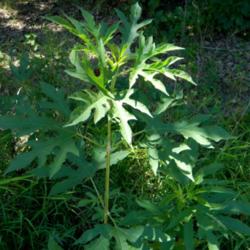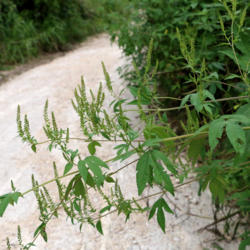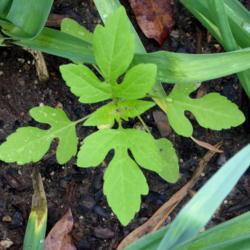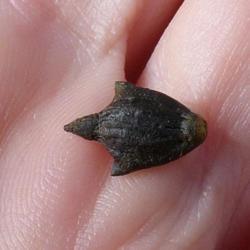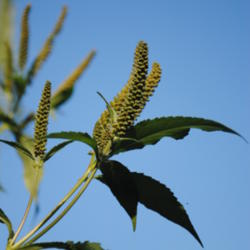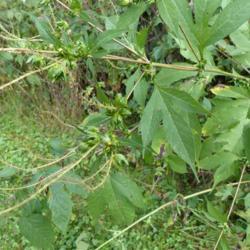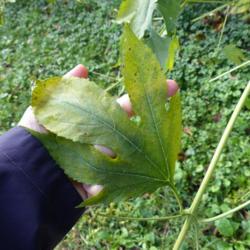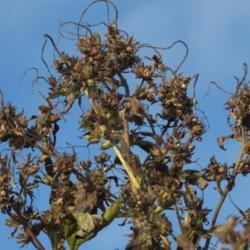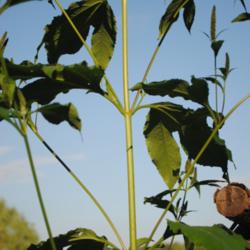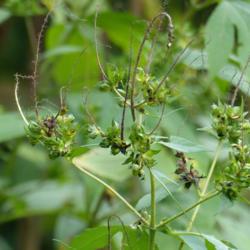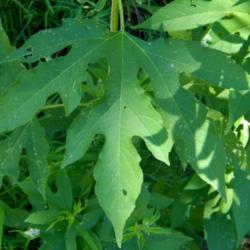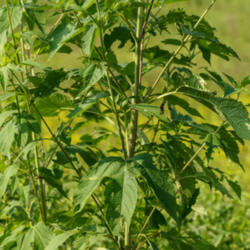Posted by
gardengus (Indiana Zone 5b) on Oct 14, 2013 9:52 AM concerning plant:
As a kid we knew these as Horseweeds. They are eaten in the pasture area by horses, goats, and cows. In areas where they are allowed to go to seed, they seem to be loved by finches of all colors.
This weed is an annual from the aster family. It can grow up to 16 feet, mostly where it has ample water.
Native to North America, found in almost all states, and used by Native Americans.
Posted by
Chillybean (Iowa - Zone 5a) on Sep 28, 2015 12:14 PM concerning plant:
No one in our family has ragweed allergies, so I can view this plant more favorably than those who suffer. In restoration settings, it is considered a pioneer plant. An area becomes disturbed and the Giant Ragweed will readily fill in empty spaces. As more desirable plants starting popping up, this one will decrease. This plant prefers wetter areas, so in years of drought it will not thrive.
It does not attract many pollinating insects because this is wind pollinated. The larvae of several moths consume the leaves, stems, flowers and seeds. Because of its hard shell, the birds do not readily consume the seeds. Cattle and deer will graze on the foliage.
This plant is truly a giant, which makes it a fun place for the children to hide and run around in. The only time it wasn't so much fun was when they were startled by a family of Pheasants that also found it a nice hiding spot.
This fall I had my first trek through all the ragweed. Oh, it was amazing! I felt like I was walking through a forest. I found the developing seed heads quite fascinating. Birds may not eat the seeds, but they do like foraging for insects among the stems and leaves. I have seen far fewer birds at my feeders... well, this is where they are!
Posted by
jmorth (central Illinois) on Oct 30, 2011 2:33 PM concerning plant:
Pollen from this plant is a major source of hay fever.
Seeds from this plant have been discovered in several archaeological sites, prompting the idea it may have been cultivated as a food source.
Likes moist soils in low woods, along floodplains, steams, disturbed sites, roadsides, and railroad right of ways.
Weed.
